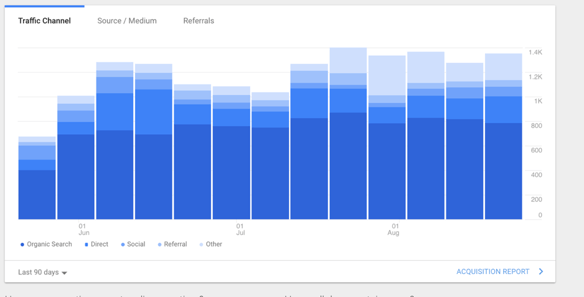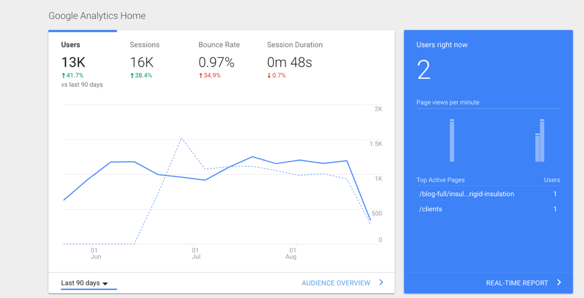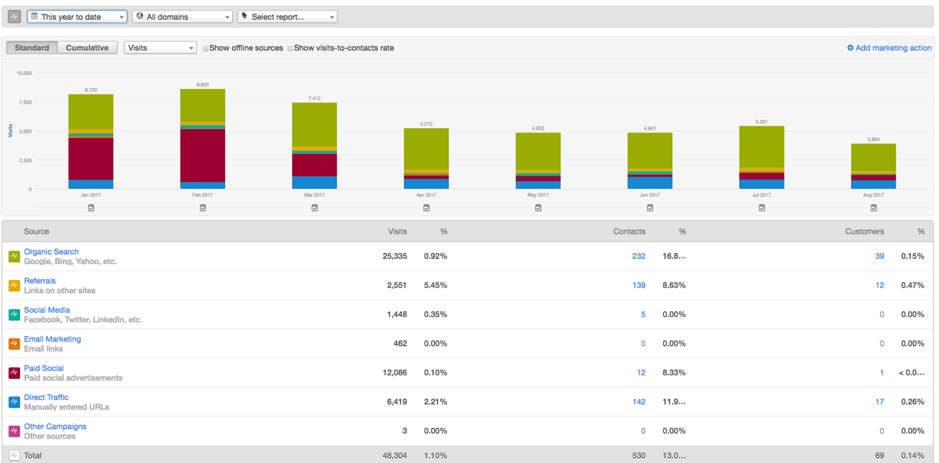As you probably already know, the world if marketing is constantly evolving at a rapid speed, sometimes faster than we realise. Most of the change in marketing can be attributed to emerging and disruptive technology, which these days makes it easier than ever before to measure results. Data has quickly become king in the marketing world, and most marketers are being asked to prove that their methods are in fact working. We understand – it is easy to get overwhelmed by measuring your marketing efforts and perhaps you’re actually measuring more than you need. When measuring the effectiveness of your marketing, the most important thing you can do is keep things simple, and don’t dig too deep. In this article, we’re going to be offering simple tips for easily and effectively measuring your marketing campaigns.
Set realistic goals and KPIs
To understand how to analyse your marketing campaigns, you need to understand what it is that you’re measuring. You can do this by knowing your marketing goals and what you want to gain from a digital marketing campaign. This means you need to set some firm goals, and then set some Key Performance Indicators (KPIs). Some typical KPIs you might want to look at may include:
- General performance (traffic, leads, reach)
- Awareness (social media likes, website, referrals)
- Channel based (website, blogs, social networks)
- Campaign based (lead generation, click-throughs, conversions)
- Source based (direct traffic, organic search, referrals, emails, PPC)
Once you have your KPIs, you can begin to measure how they are performing. For example, you'll be able to determine which channel is best for driving traffic and which offer is best for converting traffic into leads.
It’s also important to consistently review your analytics so you can identify trends over time. This insight may help you with knowing what time to publish your content online, or where to promote it. It will also help determine benchmarks so you can be testing and measuring new ideas to improve results over time.
Tools to measure marketing activity
There are plenty of tools available to help you measure your marketing results, but often they are targeted towards professional marketers who have more time to dedicate to analysis and reporting. For small business owners, who are wearing many hats in their business, these tools can be too time consuming to learn. So if you want a simple way to measure your marketing, here are two effective tools you can use to begin with: HubSpot and Google Analytics.
Many SMEs use Google Analytics because it’s free and relatively easy to use. Most importantly, it’s easily set out so even marketing novices can understand and analyse the data it provides. Google Analytics allows you to see where your website traffic is coming from and how visitors interact with your website. You can track the response to different social media campaigns, as well as specific conversions. Below are a few snapshots of the type of data you can gather from Google Analytics.

Fig 1: A graph showing where your website traffic is coming from

Fig 2: Users over the last three months, bounce rate and average time spent on website
If you rely on your website for lead gen then you’ll need something more robust. We use and recommend HubSpot’s marketing and sales software. It’s a highly valuable tool for SMEs who are looking for a simple and effective way to measure the effectiveness of their marketing because all online activity is connected to the analytics and reporting, its easy to see what is generating visits, leads and customers and what the conversion rates are. The dashboard is customisable and a quick reference to see how your marketing (and sales) activities are tracking. Also – you can easily set up campaigns to measure the success of individual tactics within a campaign.

Fig 3: This screen shot from Hubspot Sources shows how easy it is to see where your traffic, leads and customers are coming from.
To wrap things up …
As we mentioned before, it is easy to get overwhelmed with measuring ROI and sometimes you might be measuring too much, which can cause more headaches than they’re worth. When it comes down to it, measuring ROI really depends on the purpose of each marketing campaign and how it fits with your end goal.
The best thing to do is keep things simple by starting with an understanding of what it is you’re measuring with some concrete goals and KPIs. It can take some time to find what works for you but once you do, you’ll be a marketing analyst in no time.

